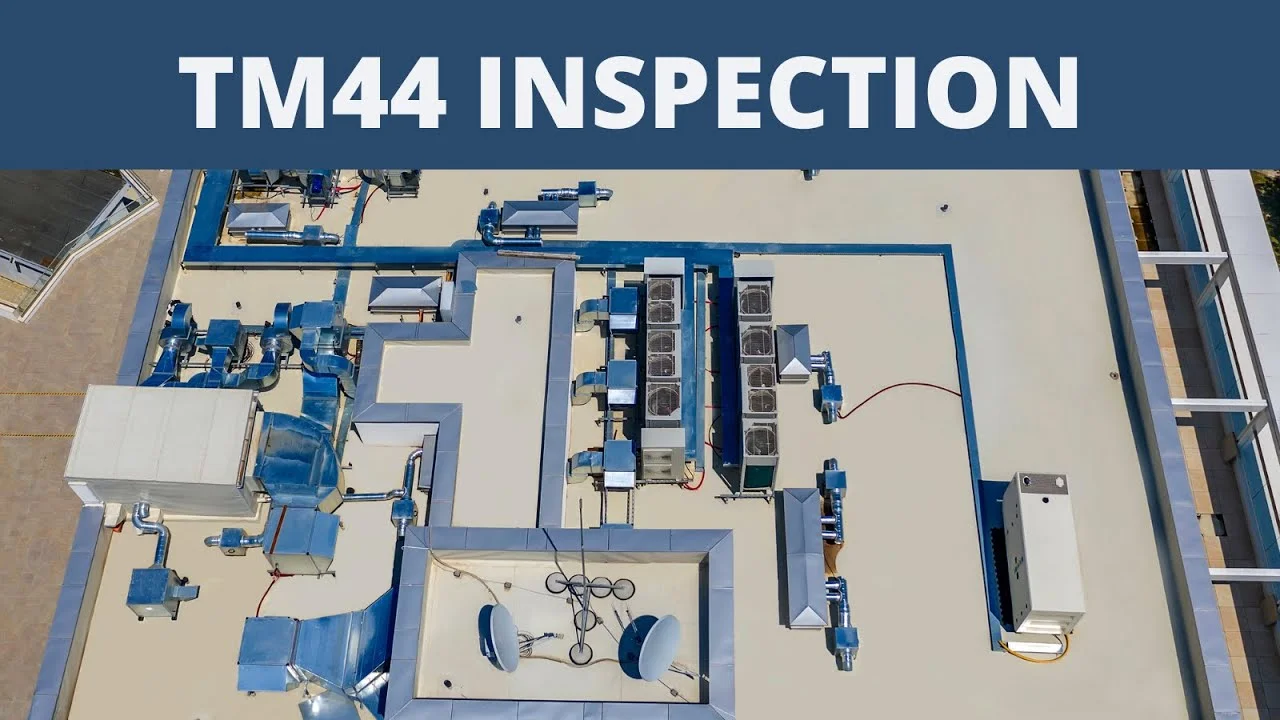What is a TM44 inspection and TM44 inspection cost?
TM44 inspection cost or price and what is a TM44 inspection question are the most asking questions in Google. The purpose of the air conditioning inspection report is to highlight all areas of the operation of all HVAC equipment that could improve performance and reduce energy costs. We try to consider the introduction of any no-cost or low-cost initiative and any capital investment opportunity that may arise.
The survey covers the inspection of air conditioning systems, measurement of performance and power of fans, as well as the associated cooling electrical load, comparison of performance with industry standards to identify energy savings while maintaining their minimum performance requirements.
A number of other observations are made during the inspection; they cover issues such as the condition of air conditioning systems, adequacy of maintenance regimes, cooling/building loads, fresh air volumes, air change rate and control of auxiliary units.
The TM44 inspection cost is, to the extent possible, performed by visual observations of a representative sample of the air conditioning equipment and other visual indicators such as refrigerant sight glasses, pressure, temperature or filter, although when these are not available the inspector may take test readings.The air conditioning inspection also includes a review of design, construction and maintenance records, when available.
The control process
As TM44 air conditioning inspectors, we have a duty to comply with relevant health and safety legislation. This includes the duty to draw the attention of the owner or manager of the building to obvious cases of inadequate maintenance or negligence, where these may have implications for the health and safety of building occupants or the public.
The air conditioning inspection report includes a comparison of the size and suitability of the cooling plant against the building’s cooling loads and the effectiveness of current maintenance regimes. All of this will allow you to optimize the HVAC operations of your buildings and reduce energy costs and carbon dioxide emissions.
Air conditioning systems that are not used for cooling the air of people are exempt from this survey and are not covered by the inspection. This exemption generally applies to air conditioning systems in computer rooms, server rooms, communication rooms and other areas where people are not present.
The main items covered by the air conditioning report are:
- Inspect the general condition of the air conditioning system, indoor and outdoor unit.
- Investigate any improper installation and refrigerant leakage.
- Identify any old refrigerant such as R22.
- Identify any programmer deficiency and incorrect date and time.
- Identify any obstructions in filters and screens.
During the TM44 air conditioning inspection no maintenance is performed, and no adjustments are made on the controllers. Anything we identify will be included in our report along with suggested resolution. For each air conditioning inspection, we normally choose a minimum of 3 units or 10% of the existing units and carry out the survey on these samples. As energy assessors, we strive to choose the units with the worst conditions and problems for inspections, as they are the ones that will benefit the most from the report. However, recommendations for units in the sample may not apply to others.
TM44 inspection cost
The recommendations can be as simple and inexpensive as washing the filters, or very costly like replacing the unit. In our recommendations, we seek to suggest cost-effective and feasible solutions to save money, reduce energy consumption, and eliminate dangerous old refrigerants.
Where possible, we suggest the use of renewable energies such as wind power, photovoltaic solar panels and cogeneration units (combined heat and electricity). Sub-metering is a method of effectively controlling energy consumption and recording the effects of system improvements.
We can also suggest modifications to the building structure by improving the insulation, using better glazing, reflective barriers and exterior shading, as these changes will reduce cooling load, energy consumption and CO2 emissions.
Who needs a TM44 inspection
The Energy Performance of Buildings Regulations 2007 introduced a legal obligation, TM44 inspection cost (Air Conditioning), on any person or persons who control or manage the operation of an air conditioning system to ensure the system is inspected by the 4th January 2009 for 250kW and larger systems and by the 4th January 2011 for systems between 12kW and 250kW.
To date, we have completed over 1800 TM44 inspections for clients in the retail, engineering, banking, education and service sectors across the whole of the UK.
This means that every installation in England and Wales over 12kW must now have an inspection certificate and report in place (with the exception of systems installed after January 2008 which must be inspected within 5 years). The next round of renewals will be due in January 2016 so call to book our TM44 assessor as soon as possible to ensure you get this renewed on time.
Covid19 assessments are now required as part of any assessment of HVAC control and use. The importance of ensuring increased natural air flow and increased air changes is paramount. Whilst conducting TM44 inspection's we will also provide additional guidance on Covid19 control.
Why choose us?
PE Energy has carried out over 1,850 TM44 inspections since 2014 for clients such as Cooperative Food, Motor Fuel Group, Yorkshire Bank, Coventry Building Society, The Post Office, Greggs and many many more. We can give the best TM44 inspection cost your business.
Our experience is industry-leading and we provide additional guidance on Covid19 impacts with HVAC as well as general energy efficiency recommendations in commercial, industrial and government properties.
All TM44 inspectors are fully accredited and are quality assessed by certified accreditation bodies.
Are you looking for TM44 inspection cost?
Would you like a TM44 inspection quote? Contact our TM44 inspection professionals today.

